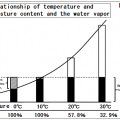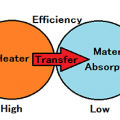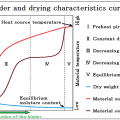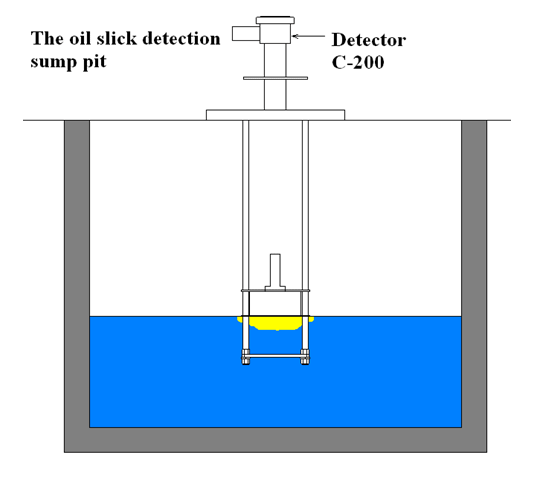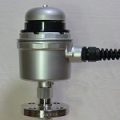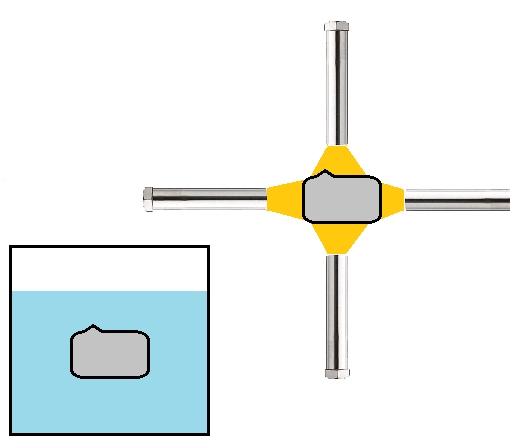在一般情況下”乾燥”有3種乾燥工作。
是表面附著水的乾燥和塗料的乾燥和素材的内部乾燥。
因為到前項,說明内部乾燥了所以由這項項說明表面乾燥。
表面附著水的乾燥時間被用蒸發潛熱的供給決定。
這個視頻是 紙板上的水蒸發 用熱風加熱器的示威。
水的飽和蒸氣壓與蒸發潜熱
| 温度 | 圧力 | 蒸發潜熱 | |
|---|---|---|---|
| ℃ | mmHg | kcal/kg | kJ/g |
| 0 | 4.6 | 597.1 | 2.502 |
| 1 | 4.9 | 596.6 | 2.500 |
| 2 | 5.3 | 596.0 | 2.498 |
| 3 | 5.7 | 595.4 | 2.495 |
| 4 | 6.1 | 594.9 | 2.493 |
| 5 | 6.5 | 594.3 | 2.491 |
| 6 | 7.0 | 593.8 | 2.488 |
| 7 | 7.5 | 593.2 | 2.486 |
| 8 | 8.0 | 592.6 | 2.483 |
| 9 | 8.6 | 592.1 | 2.481 |
| 10 | 9.2 | 591.5 | 2.478 |
| 11 | 9.8 | 590.9 | 2.475 |
| 12 | 10.5 | 590.4 | 2.473 |
| 13 | 11.2 | 589.8 | 2.471 |
| 14 | 12.0 | 589.3 | 2.469 |
| 15 | 12.8 | 588.7 | 2.466 |
| 16 | 13.6 | 588.1 | 2.464 |
| 17 | 14.5 | 587.5 | 2.461 |
| 18 | 15.5 | 587.0 | 2.459 |
| 19 | 16.5 | 586.4 | 2.456 |
| 20 | 17.5 | 585.9 | 2.454 |
| 21 | 18.6 | 585.3 | 2.452 |
| 22 | 19.8 | 584.8 | 2.450 |
| 23 | 21.1 | 584.2 | 2.447 |
| 24 | 22.4 | 583.6 | 2.445 |
| 25 | 23.8 | 583.1 | 2.443 |
| 26 | 25.2 | 582.5 | 2.440 |
| 27 | 26.7 | 581.9 | 2.438 |
| 28 | 28.3 | 581.4 | 2.436 |
| 29 | 30.0 | 580.8 | 2.433 |
| 30 | 31.8 | 580.2 | 2.431 |
| 31 | 33.7 | 579.7 | 2.428 |
| 32 | 35.7 | 579.1 | 2.426 |
| 33 | 37.7 | 578.5 | 2.423 |
| 34 | 39.9 | 578.0 | 2.421 |
| 35 | 42.2 | 577.4 | 2.419 |
| 36 | 44.6 | 576.8 | 2.416 |
| 37 | 47.1 | 576.2 | 2.414 |
| 38 | 49.7 | 575.7 | 2.412 |
| 39 | 52.4 | 575.1 | 2.409 |
| 40 | 55.3 | 574.5 | 2.407 |
| 41 | 58.3 | 574.0 | 2.405 |
| 42 | 61.5 | 573.4 | 2.402 |
| 43 | 64.8 | 572.8 | 2.400 |
| 44 | 68.3 | 572.2 | 2.397 |
| 45 | 71.9 | 571.7 | 2.395 |
| 46 | 75.7 | 571.1 | 2.392 |
| 47 | 79.6 | 570.5 | 2.390 |
| 48 | 83.7 | 570.0 | 2.388 |
| 49 | 88.0 | 569.4 | 2.385 |
| 50 | 92.5 | 568.8 | 2.383 |
| 51 | 97.2 | 568.2 | 2.380 |
| 52 | 102.1 | 567.6 | 2.378 |
| 53 | 107.2 | 567.1 | 2.376 |
| 54 | 112.5 | 566.5 | 2.373 |
| 55 | 118.1 | 565.9 | 2.371 |
| 56 | 123.9 | 565.3 | 2.368 |
| 57 | 129.9 | 564.7 | 2.366 |
| 58 | 136.1 | 564.1 | 2.363 |
| 59 | 142.7 | 563.6 | 2.361 |
| 60 | 149.4 | 563.0 | 2.359 |
| 61 | 156.5 | 562.4 | 2.356 |
| 62 | 163.8 | 561.8 | 2.354 |
| 63 | 171.5 | 561.2 | 2.351 |
| 64 | 179.4 | 560.6 | 2.349 |
| 65 | 187.6 | 560.0 | 2.346 |
| 66 | 196.2 | 559.5 | 2.344 |
| 67 | 205.0 | 558.9 | 2.341 |
| 68 | 214.3 | 558.3 | 2.339 |
| 69 | 223.8 | 557.7 | 2.336 |
| 70 | 233.8 | 557.1 | 2.334 |
| 71 | 244.1 | 556.5 | 2.331 |
| 72 | 254.7 | 555.9 | 2.329 |
| 73 | 265.8 | 555.3 | 2.326 |
| 74 | 277.3 | 554.7 | 2.324 |
| 75 | 289.2 | 554.1 | 2.321 |
| 76 | 301.5 | 553.5 | 2.319 |
| 77 | 314.2 | 552.9 | 2.316 |
| 78 | 327.4 | 552.3 | 2.314 |
| 79 | 341.1 | 551.7 | 2.311 |
| 80 | 355.3 | 551.1 | 2.309 |
| 81 | 369.9 | 550.5 | 2.306 |
| 82 | 385.0 | 549.9 | 2.304 |
| 83 | 400.7 | 549.3 | 2.301 |
| 84 | 416.9 | 548.7 | 2.299 |
| 85 | 433.6 | 548.1 | 2.296 |
| 86 | 450.9 | 547.5 | 2.294 |
| 87 | 468.7 | 546.9 | 2.291 |
| 88 | 487.2 | 546.2 | 2.288 |
| 89 | 506.2 | 545.6 | 2.286 |
| 90 | 525.9 | 545.0 | 2.283 |
| 91 | 546.2 | 544.4 | 2.281 |
| 92 | 567.1 | 543.8 | 2.278 |
| 93 | 588.7 | 543.2 | 2.276 |
| 94 | 611.0 | 542.6 | 2.273 |
| 95 | 634.0 | 541.9 | 2.270 |
| 96 | 657.7 | 541.4 | 2.268 |
| 97 | 682.1 | 540.7 | 2.265 |
| 98 | 707.3 | 540.1 | 2.263 |
| 99 | 733.3 | 539.4 | 2.260 |
| 100 | 760.0 | 538.8 | 2.257 |
| 101 | 787.0 | 538.1 | 2.254 |
| 102 | 815.2 | 537.4 | 2.251 |
| 103 | 844.2 | 536.8 | 2.249 |
| 104 | 874.5 | 536.2 | 2.246 |
| 105 | 906.1 | 535.6 | 2.244 |
| 106 | 938.4 | 535.0 | 2.241 |
| 107 | 971.6 | 534.3 | 2.239 |
| 108 | 1003.7 | 533.7 | 2.236 |
| 109 | 1040.0 | 533.0 | 2.233 |
| 110 | 1074.6 | 532.4 | 2.231 |
加熱素材的熱量,因為被作為變成水蒸氣的潛熱消費所以,水滴變成在表面的間為定率乾燥期間。
能加熱到素材的被忍受的温度,但是,像預先表那樣,也用從0℃到100℃有衹10%的不同。
人們認為勉強提高材料温度的必要少。
<<水1g的蒸發熱>>
| 温度℃ | 0℃ | 20℃ | 40℃ | 60℃ | 80℃ | 100℃ |
|---|---|---|---|---|---|---|
| 蒸發潜熱 | 2502J | 2454J | 2407J | 2359J | 2309J | 2257J |
附著水是正粘在材料表面上根據界面張力的水分。
附著水的蒸氣壓力,水的蒸發温度,可以在低壓以及真空和飽和蒸氣壓力相同因為和壓力成比例所以於是低温乾燥。
 HEAT-TECH 最佳技術網店
HEAT-TECH 最佳技術網店 





